
Where We Be
| The historic district is compact and easy to explore. You'll probably get a little lost but in a good way! |
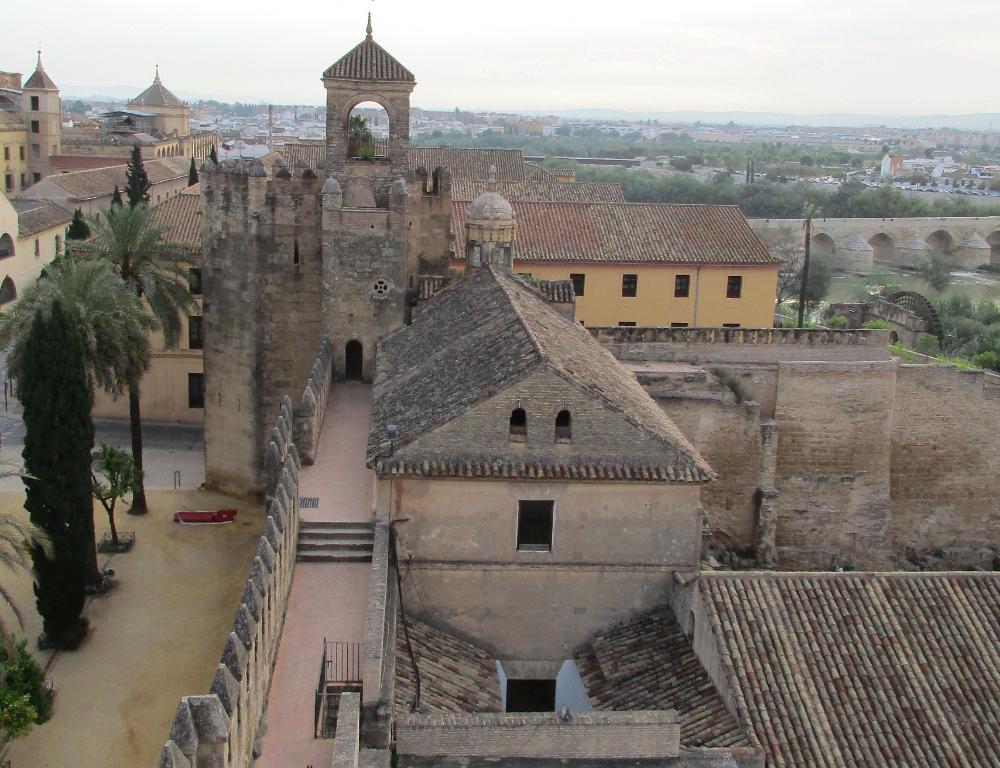
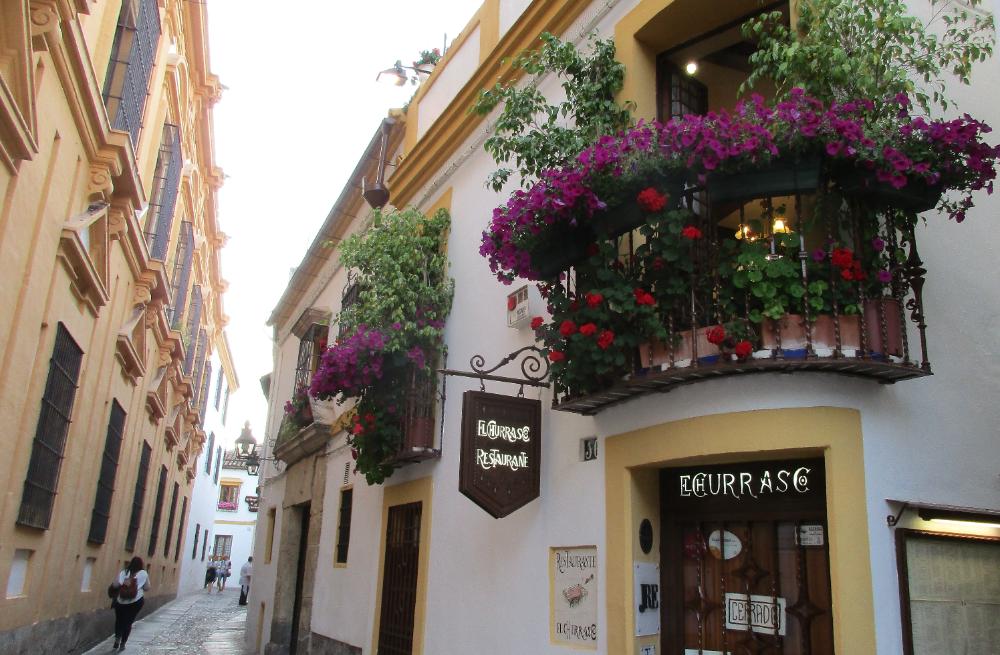
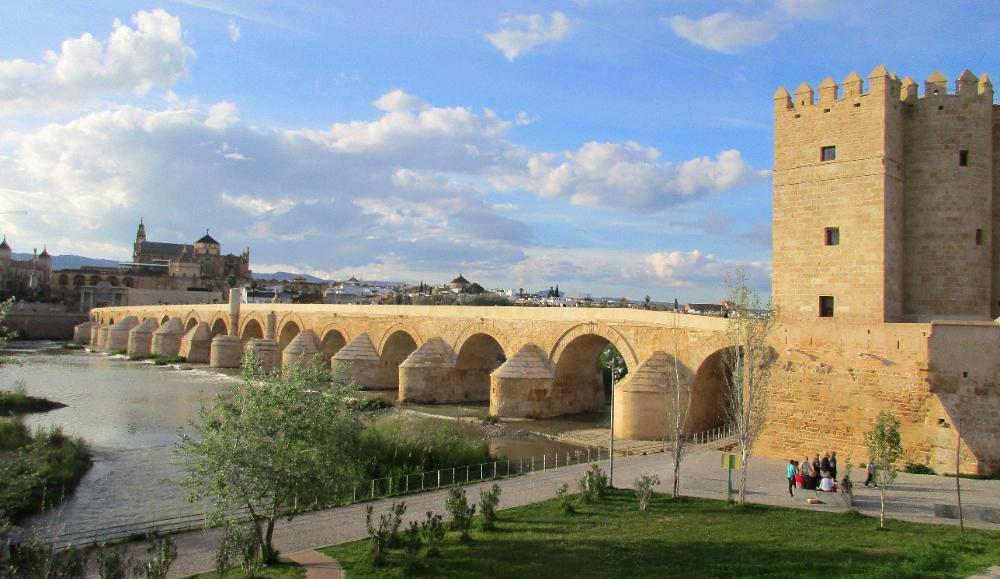
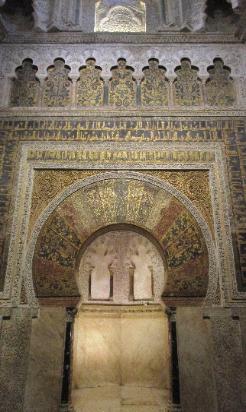
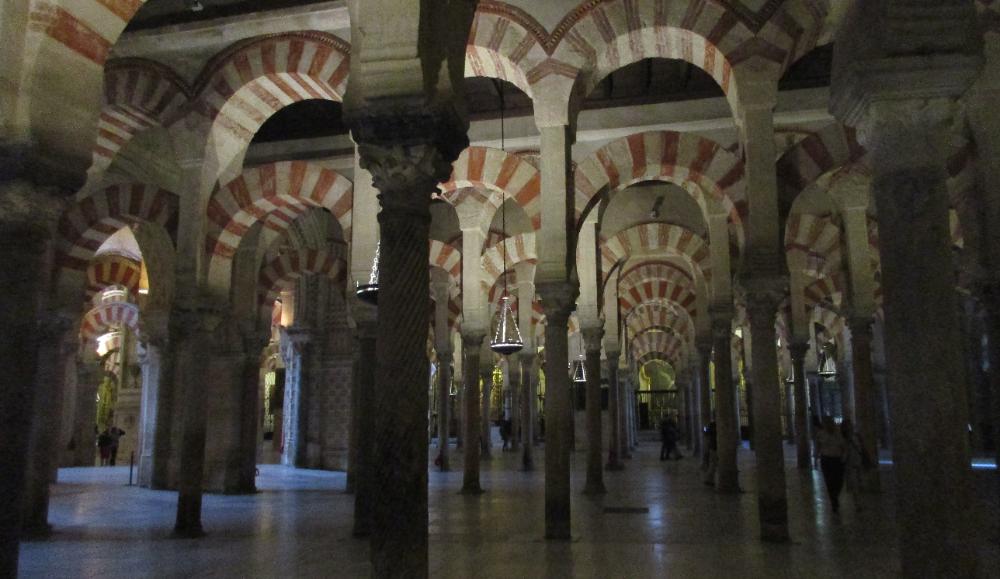
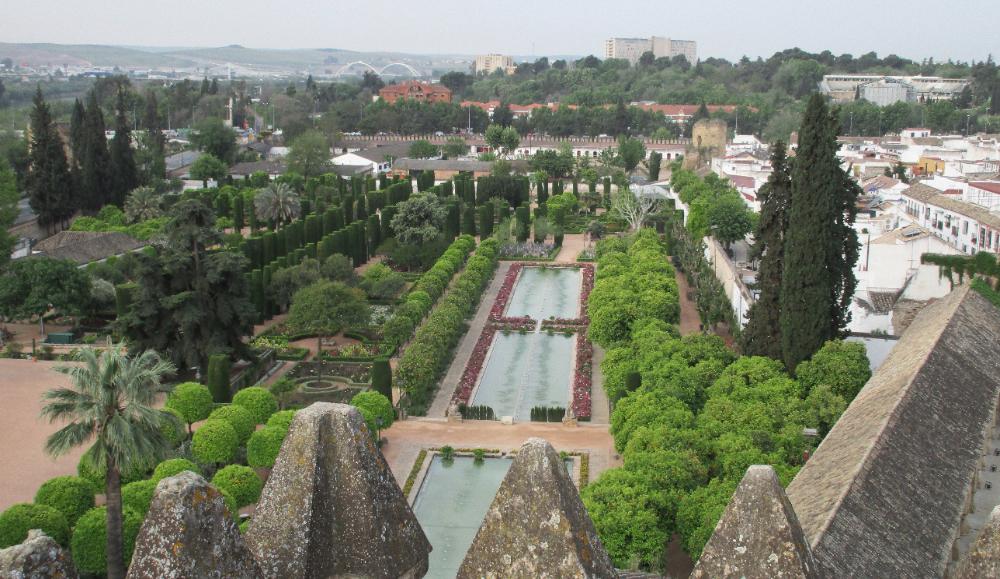
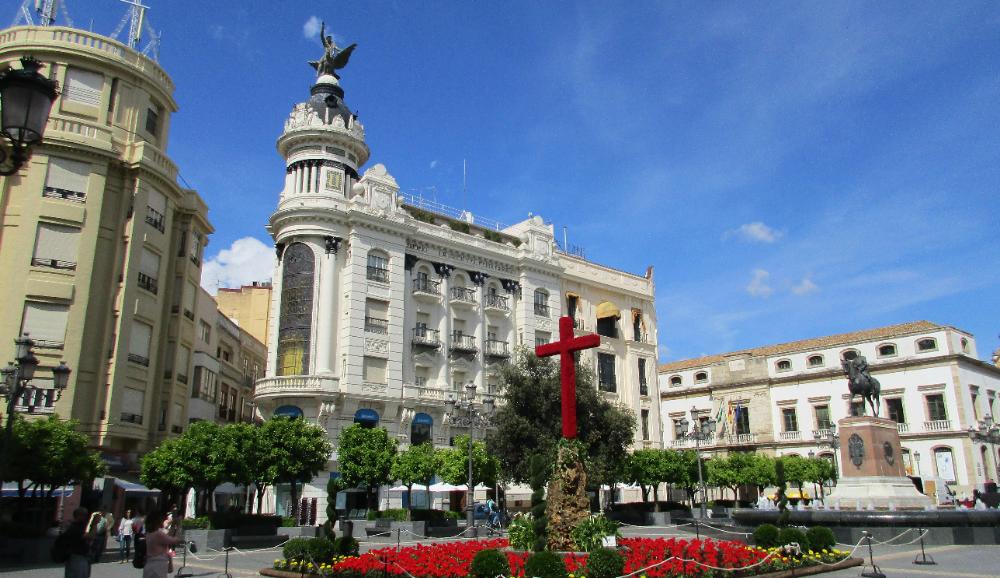
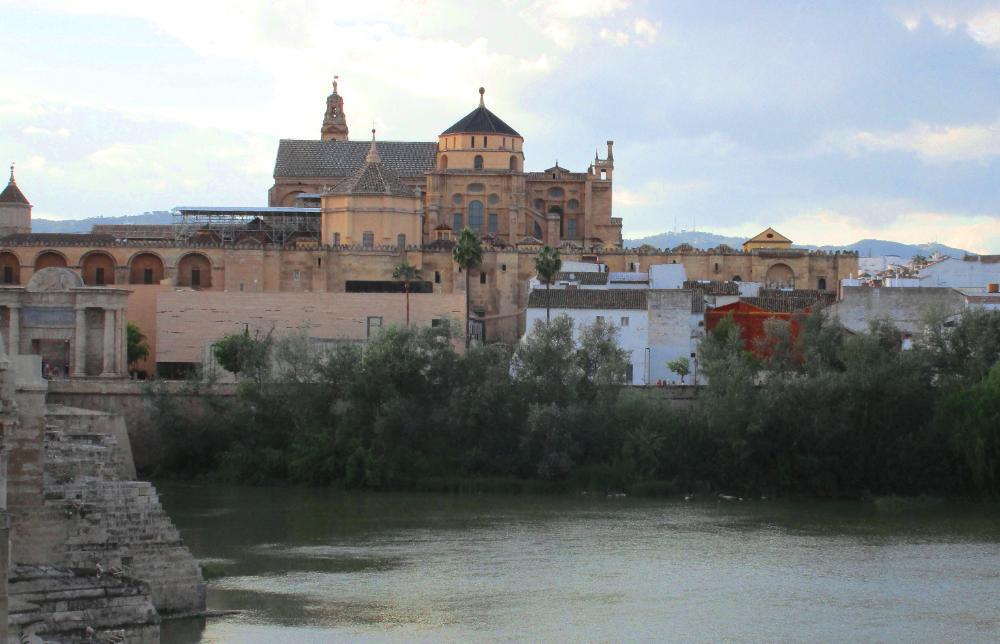
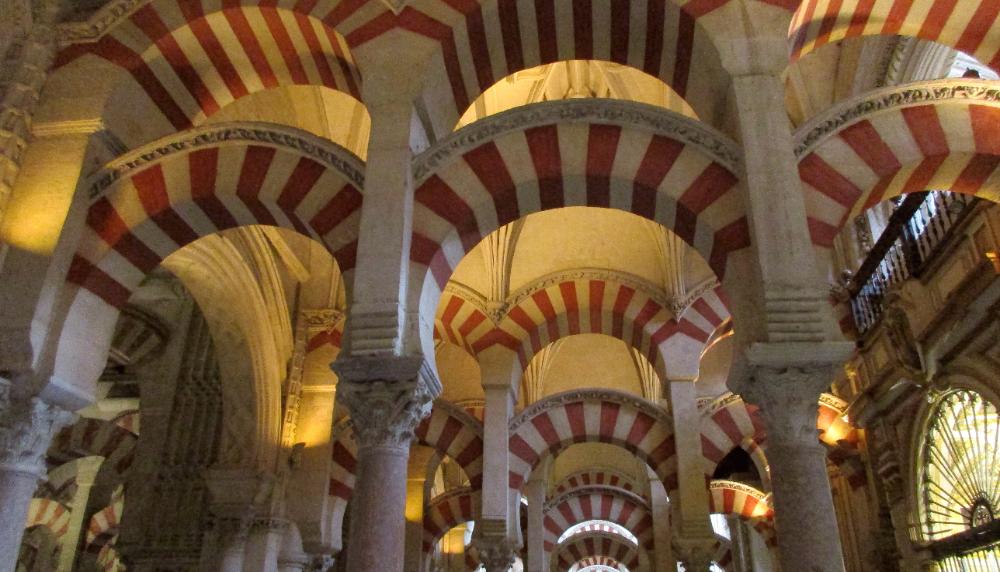
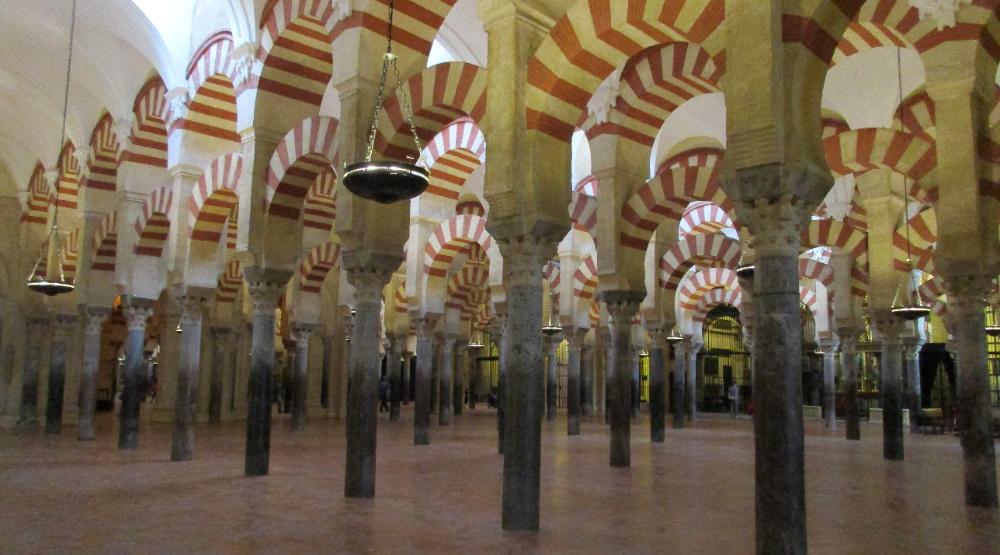
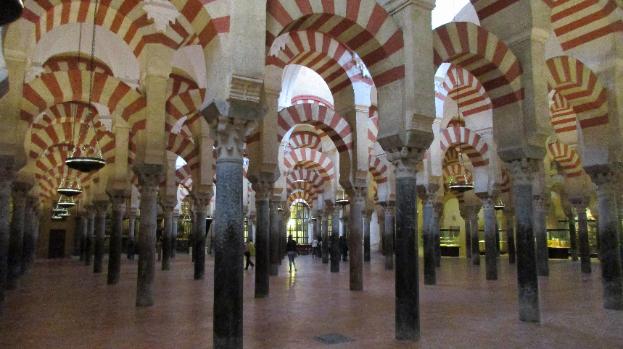
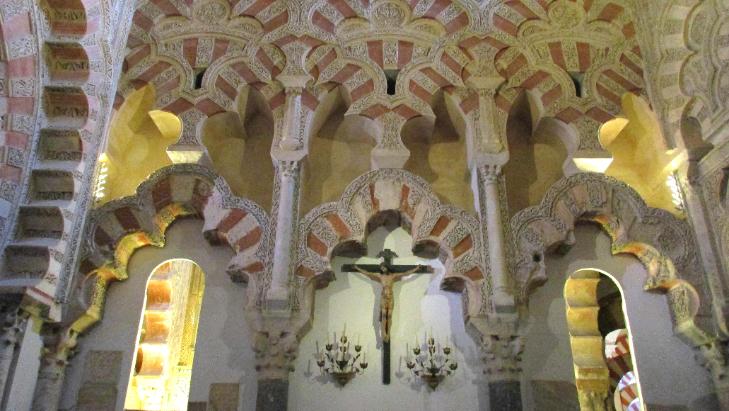
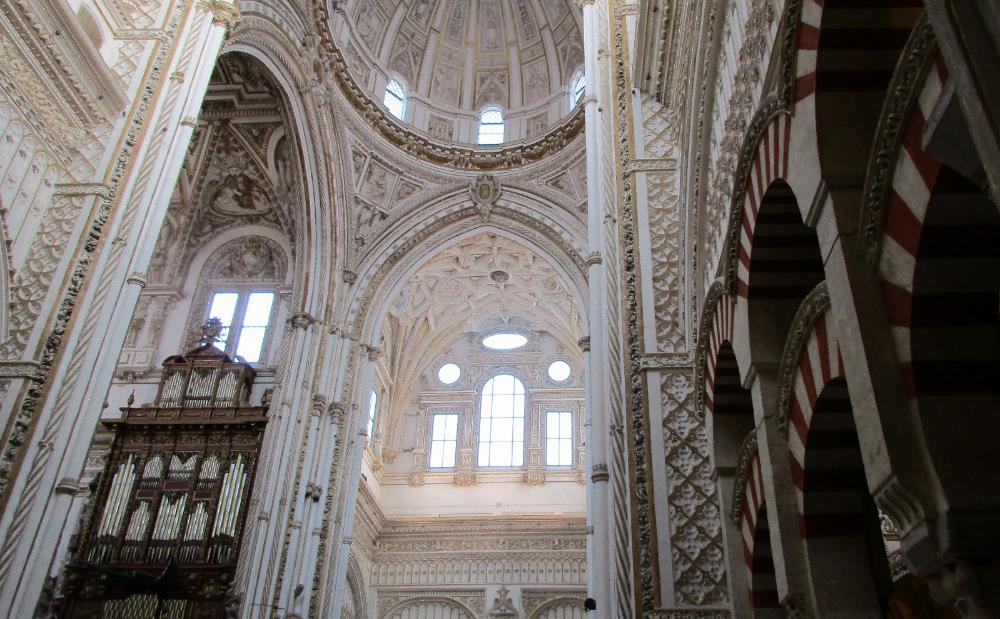
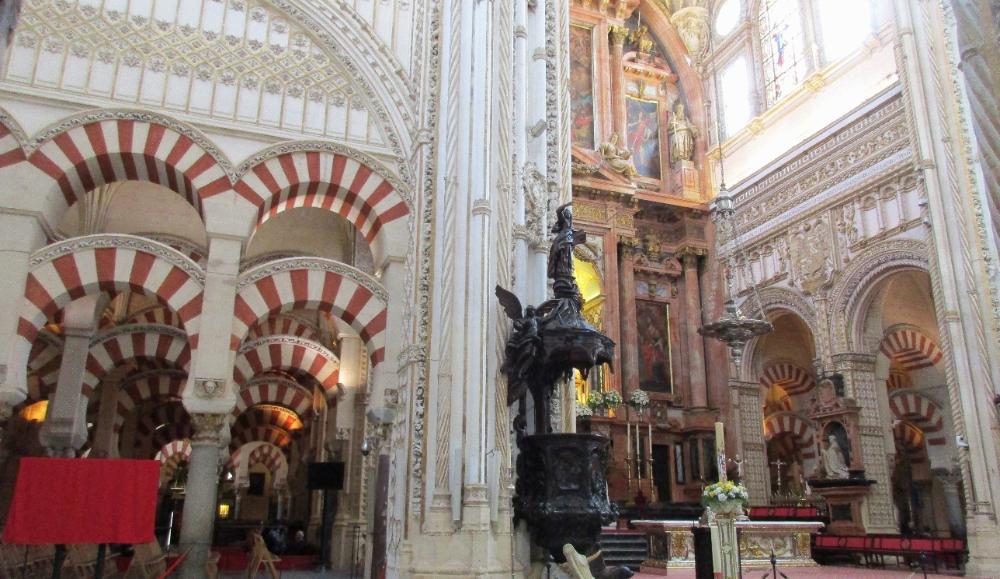
| Cordoba, Spain |
The main reason to come to Cordoba is to see
the Great Mosque of Cordoba, or Mezquita. The
mosque feels enormous, dim, and mysterious
with its row upon row of red and white arches
atop marble pillars -- pilfered from old Roman
temples by the Moors. What really makes this
place unusual is how it has become synthesized
into a Christian church: so in the middle of all
these Moorish arches you have a cathedral,
images of Christ on the cross, and stained glass
artwork. It's jarring but in a fascinating way.
Here's a good tip: if you come around 8:30 am to
the side entrance on Calle Torrijos you can visit
the mosque for free until they politely but firmly
shoo you out around 9:30 am. This saved us €8
each and is apparently a longstanding tradition
in Cordoba. We shared the mosque with a few
other early risers but no tour groups, so it felt
serene. Its elegantly simple design makes it
one of the most beautiful mosques in the world.
the Great Mosque of Cordoba, or Mezquita. The
mosque feels enormous, dim, and mysterious
with its row upon row of red and white arches
atop marble pillars -- pilfered from old Roman
temples by the Moors. What really makes this
place unusual is how it has become synthesized
into a Christian church: so in the middle of all
these Moorish arches you have a cathedral,
images of Christ on the cross, and stained glass
artwork. It's jarring but in a fascinating way.
Here's a good tip: if you come around 8:30 am to
the side entrance on Calle Torrijos you can visit
the mosque for free until they politely but firmly
shoo you out around 9:30 am. This saved us €8
each and is apparently a longstanding tradition
in Cordoba. We shared the mosque with a few
other early risers but no tour groups, so it felt
serene. Its elegantly simple design makes it
one of the most beautiful mosques in the world.
| Walking through the hypostyle hall of the Great Mosque of Cordoba is like wandering through a vast shadowy forest of marble trees |
| The Mosque of Cordoba as seen from across the Guadalquivir River |
| Smack-dab in the middle of the mosque is a Renaissance-style cathedral! (Note the red-and- white arches just to the right.) But hey, at least they didn't raze the mosque entirely, as often happened back then. We like to think it was because it was too beautiful to destroy. |
| The Moors reused old Roman columns -- 856 of them to be exact -- made of jasper, onyx, marble, and granite, primarily from a destroyed Roman temple that once stood on the site |
| On the plus side, the hypostiye hall is so big you can still get a good sense of what it would have been like without the church in the middle. The dim lighting gives the place a mysterious feel, which we liked, but interestingly enough, in Moorish times the mosque would have been open to the north, letting in natural light. Trees planted in rows in the courtyard would have followed the line of the rows of columns inside. |
| The double arches were a new introduction to architecture -- and an ingenious solution to making the ceiling higher than it could have been otherwise given the relatively short Roman columns |
| Finding a crucifix amidst all the Moorish arches comes as something of a surprise. What a terrific example of syncretism -- the merging of different religions or cultures. |
| While we wholeheartedly agree with the sentiment and would have loved to have seen the mosque in its original form, you definitely won't find THIS strange amalgam in any other city! |
| When Charles V visited the completed cathedral he was displeased and famously said, "They have taken something unique in all the world and destroyed it to build something you can find in any city." |
| An alcazar is a castle, and the Alcazar of Cordoba served as one of the primary residences of the Christian Monarchs, Ferdinand and Isabella |
| The gardens are peaceful and seem to belie the three centuries of interrogation and torture that went on here |
| In 1492 Christopher Columbus met Ferdinand and Isabella at the Alcazar as he was preparing for his first voyage |
| The Alcazar is located next to the Guadalquivir River and near the Grand Mosque, so it's easy to visit both historic places in one day |
| On a darker note, it also became the seat of the Inquisition in 1482. Boabdil was held prisoner here in 1483 until he promised to make Granada a tributary state. |
| You can climb the medieval walls and towers for great views of the city and the alcazar's extensive gardens |
| Walk across the Puente Romano, or Roman Bridge (1st century BC), to the far side of the Guadalquivir River for fine views both day and night |
| We took to eating "linner" as our big meal of the day around 3:30 pm. That way we could just have a snack in the evening instead of waiting till 9 pm for restaurants to open back up. |
| Calle de los Flores is a particularly narrow walkway lined with potted plants. Cordoba is known for its patio gardens and you can even take patio tours. |
| Large portions of the historic district in Cordoba are pedestrian-only. We think this makes cities so much more fun to visit. |
| The Jewish Quarter is particularly fun to get lost in with its maze of narrow streets, cafes, souvenir shops, and small museums |
| You'll find outdoor cafes everywhere you go in Cordoba, where alfresco dining is the norm |
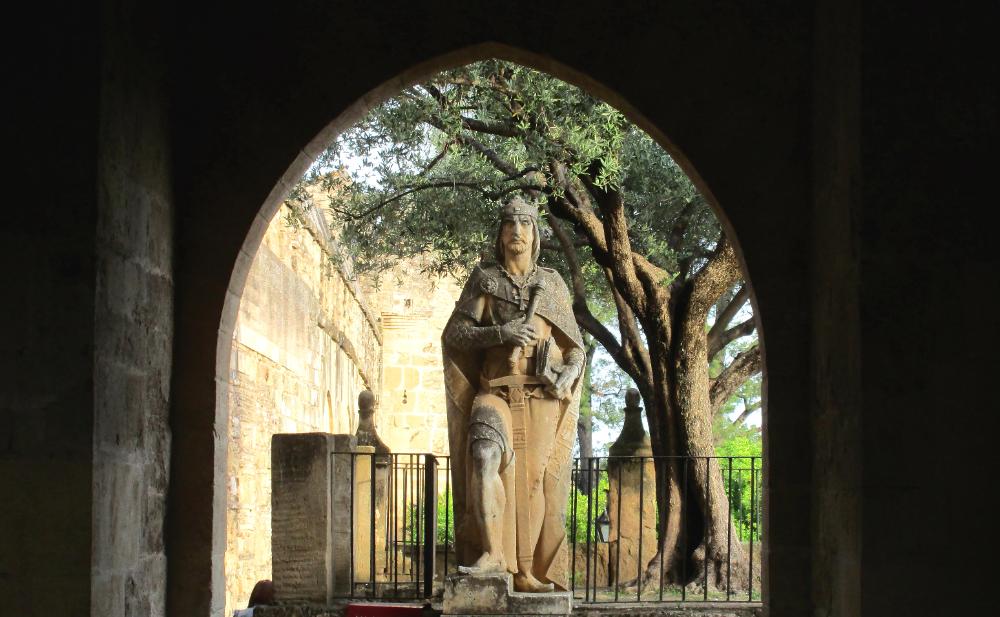
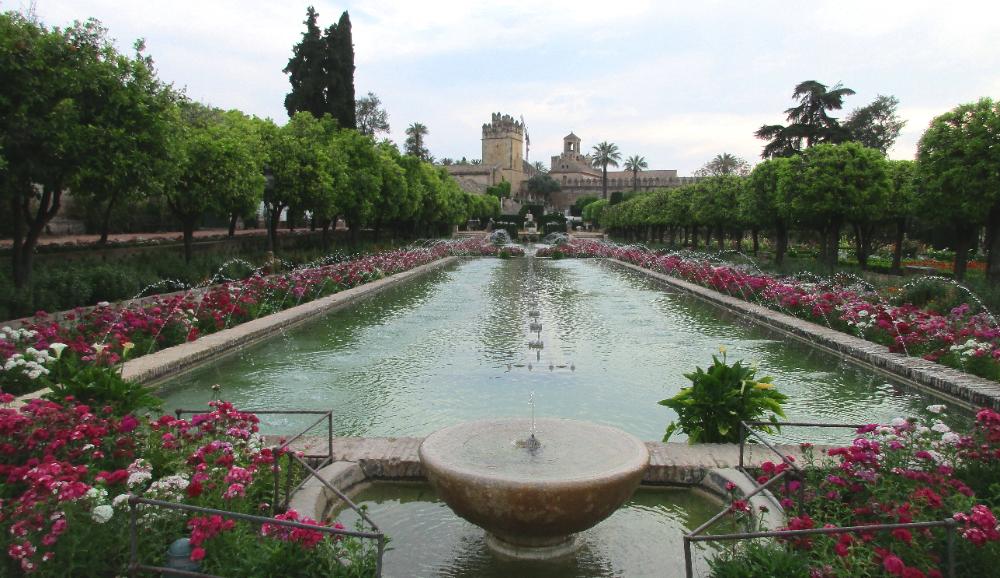
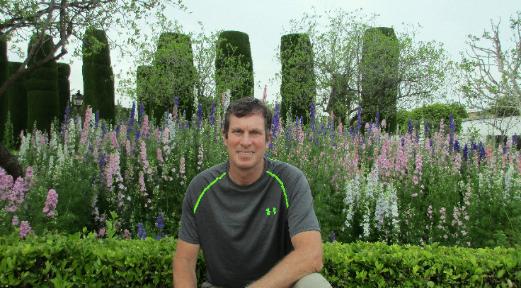
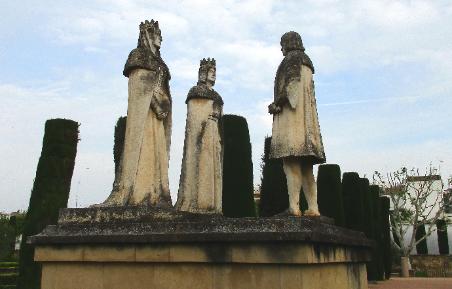
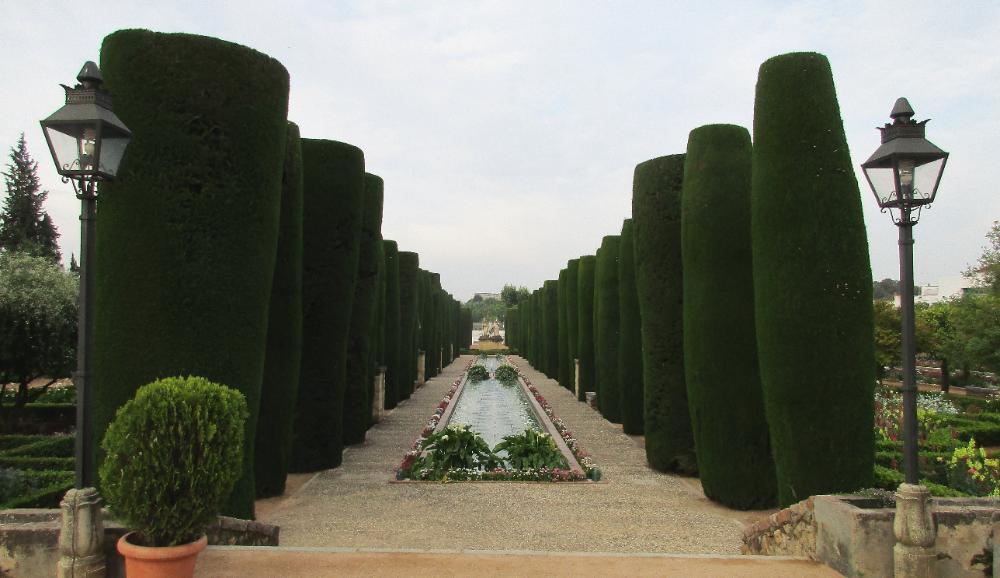
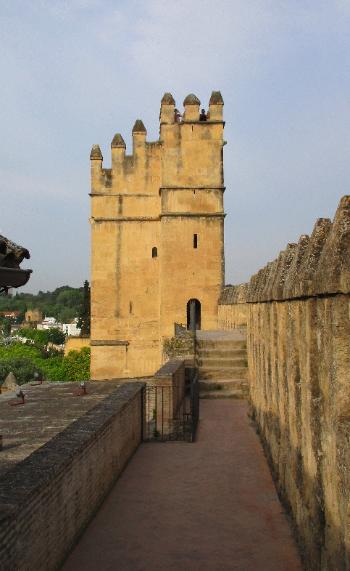
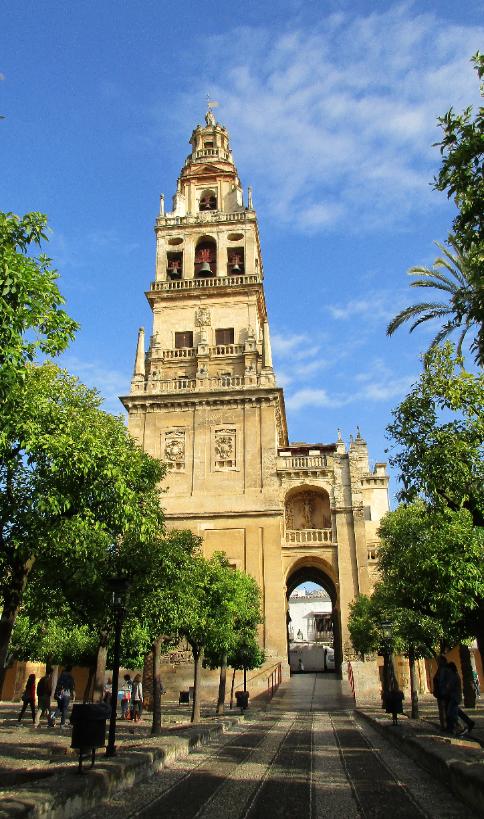
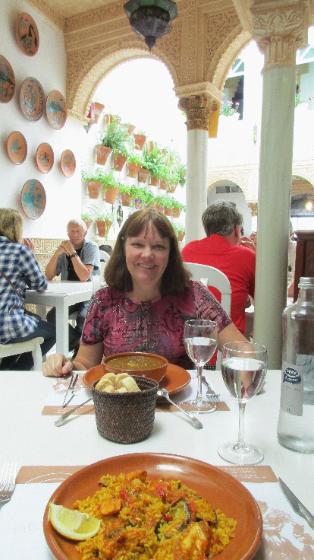
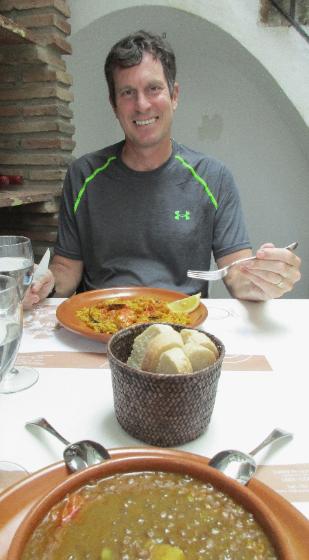
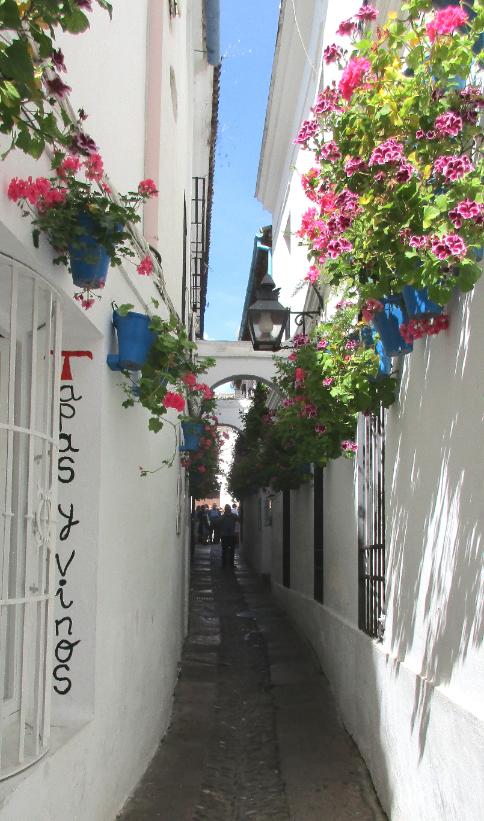
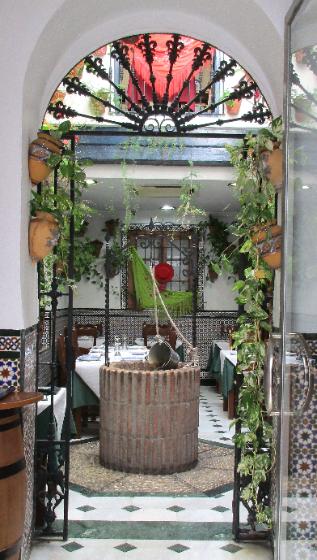
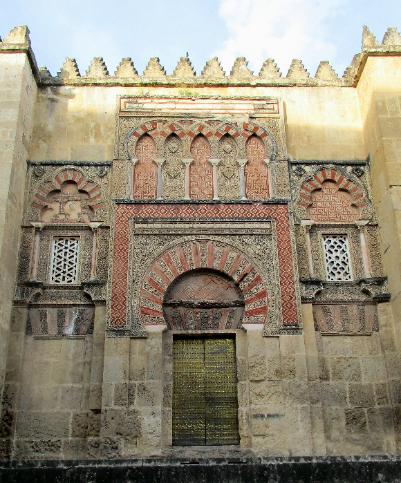
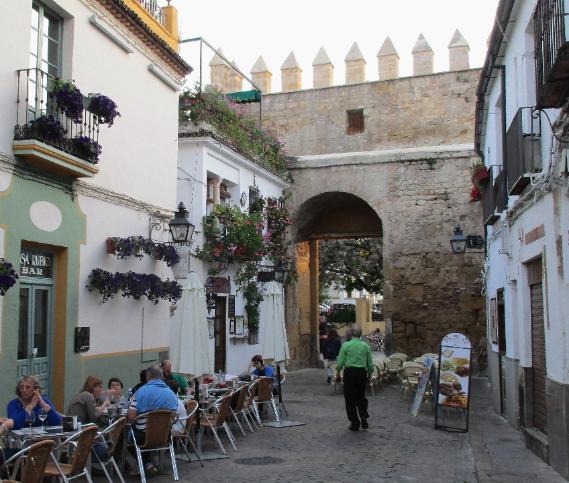
| Alcazar of Cordoba |
| City of Cordoba |
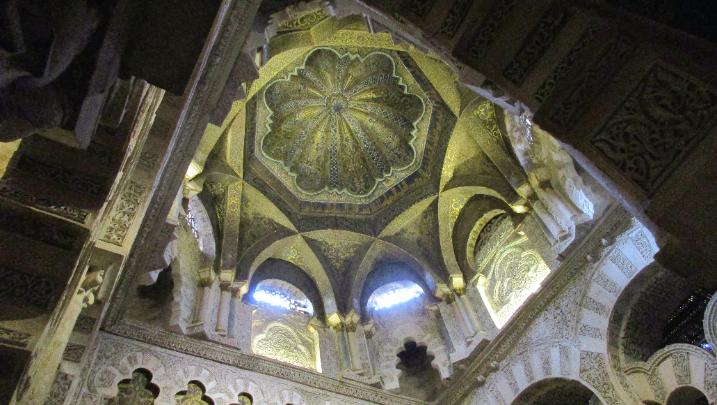
| This gilded mihrab (prayer niche) has a distinctive Moorish horseshoe arch |
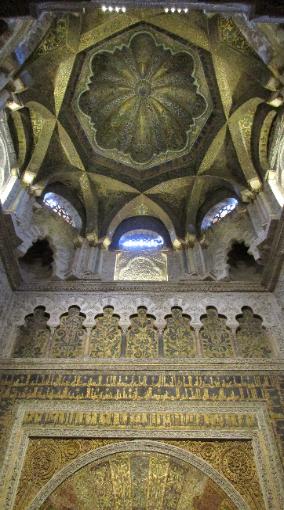
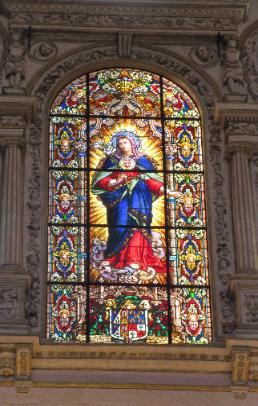
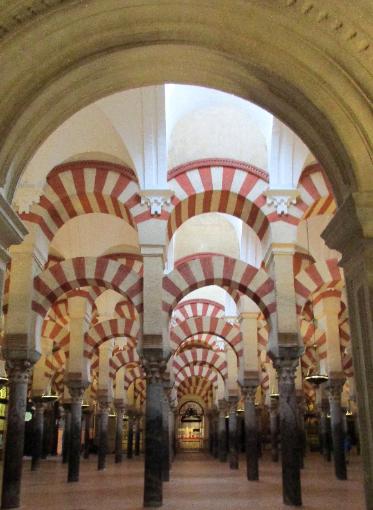
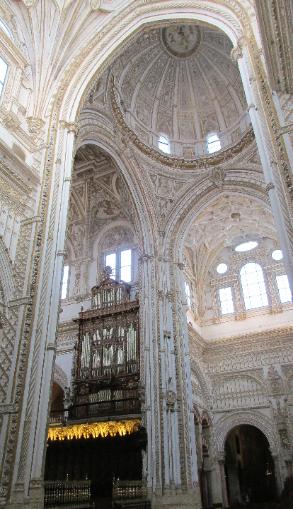
| What a wild juxtaposition of architectural elements in one building: Moorish honeycomb dome along with Christian stained glass windows |
| Nowadays the former Inquisition Tower holds Roman mosaics from an onsite archeological dig |
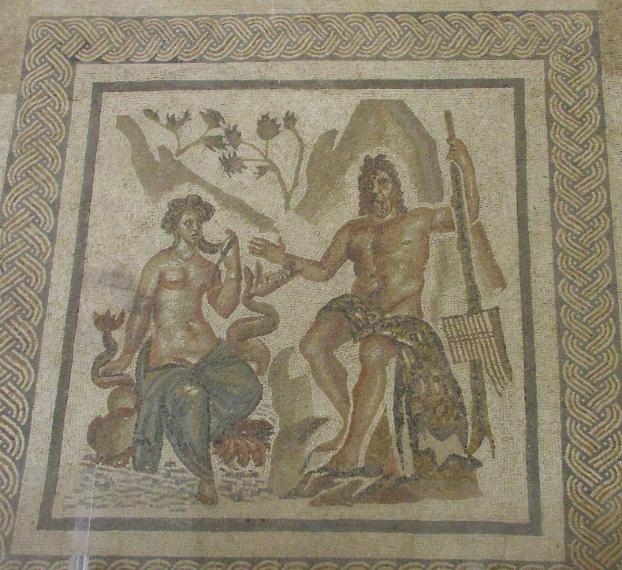
| You'll also come across historic treasures like this ancient Moorish doorway almost as an afterthought as you walk along |